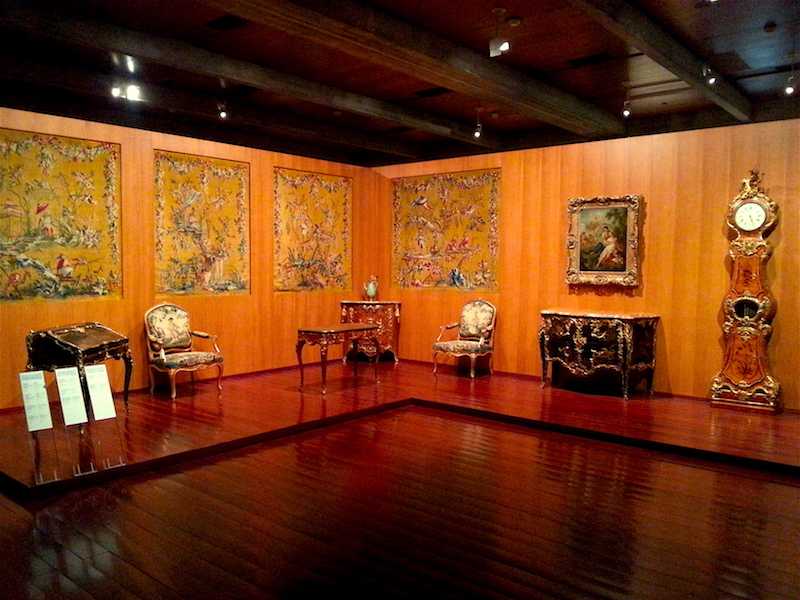
The French furniture in the Gulbenkian Museum is impressive. The collection includes pieces by two great masters: Séné and van Risen Burgh (also spelled van Risamburgh).
In a previous post, we looked at a set of Beauvais-upholstered chairs by Séné.
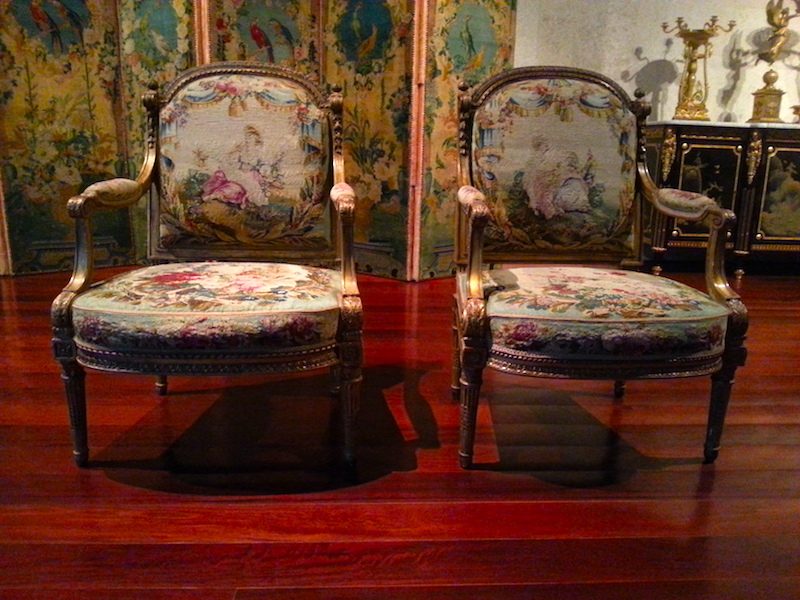
Pair of fauteuils by J.B.C. Séné in the Gulbenkian Foundation museum in Lisbon.
Today we’ll examine four pieces by van Risen Burgh/van Risamburgh.
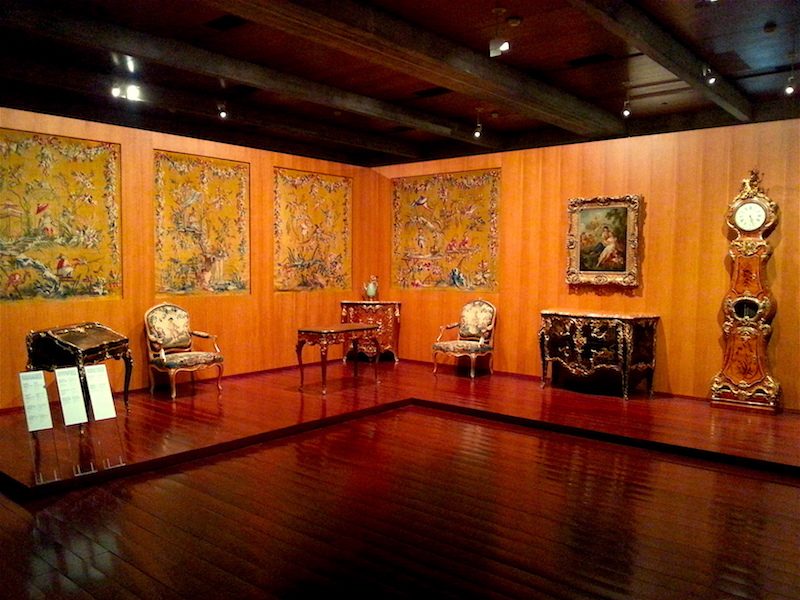
French furniture by van Risen Burgh/Risamburgh and others in the Gulbenkian Museum, Lisbon, in April, 2016.
Four of the pieces pictured above are by van Risen Burgh/Risamburgh: the escritoire at far left, the 2 chairs, and the small writing table.
According to the information posted on the placards that you see in the picture, the escritoire is made of oak, exotic woods, bronze and lacquer, and was completed sometime between 1740 and 1745. The writing table is also made of oak, exotic woods and bronze, but also leather. It was produced around 1760. The chairs are made of beechwood and upholstered with Aubusson tapestry work, and date from circa 1750.
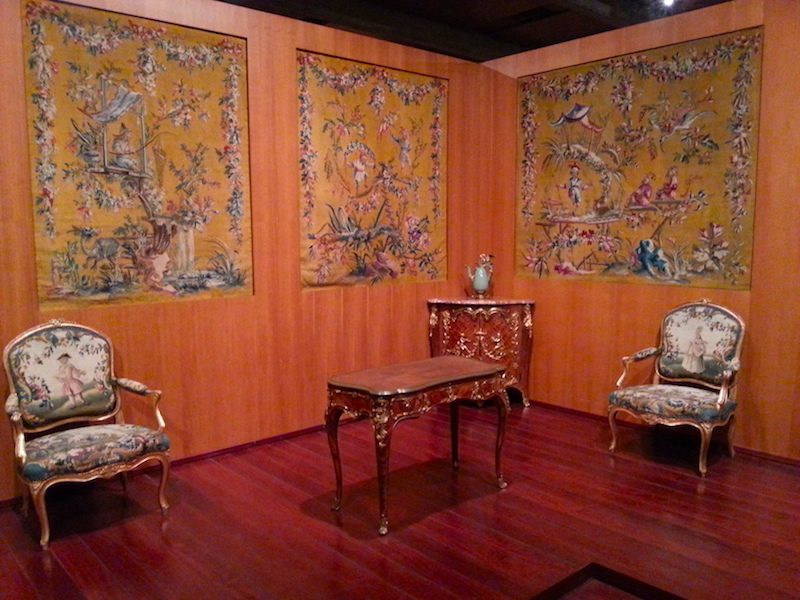
A writing table and 2 chairs by van Risen Burgh/Risamburgh in the Gulbenkian Museum, Lisbon, in April, 2016.
The picture above gives a slightly more close-up view of 3 of the pieces. Here you can see clearly that the chairs have complementary figures on them: a gentleman (left) and a lady (right). The information on the placards did not indicate whether these 2 chairs were once part of a larger set. If anyone knows, please comment below, on the Versailles Century Facebook page, or in our gallery on Instagram (@versailles_century).
In fact, two master cabinetmakers by the name of van Risen Burgh/Risamburgh were active in Paris in the early to mid-18th century. They were father and son, known as Bernard I and Bernard II. The family originally hailed from Groningen in the Netherlands, but sometime before 1700 Bernard I moved to Paris, where he died in 1736. The pieces featured here are by Bernard II, who was already qualified as a master by 1730 and retired in 1764, when he turned his workshop over to his son, Bernard III. These facts are from the Wikipedia article on Bernard II.
Another interesting fact from the same article: apart from Bernard II, the only ébénistes whose pieces are stamped with their own names are Boulle, Cressent, Oeben, and Riesener. Bernard II’s stamp consists of his initials, BVRB. For that reason alone, the van Risen Burgh spelling seems more logical than van Risamburgh, doesn’t it?







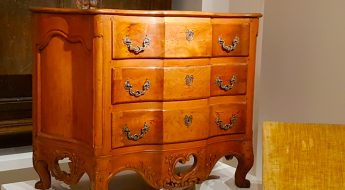
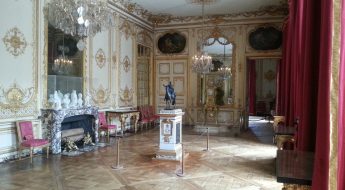








Leave a Comment